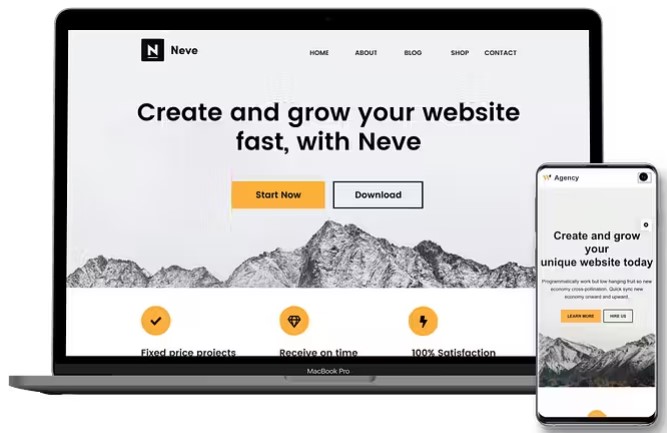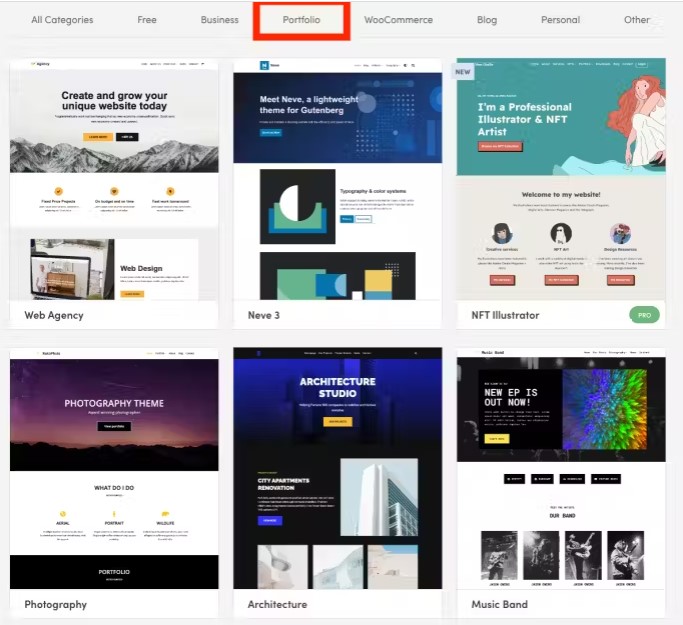You’ll need a high-quality portfolio website design if you’re an active or aspiring creative professional trying to gain new clients. They are crucial for developing your internet profile and presenting your excellent work so others may notice your expertise. Furthermore, owning your website gives you complete control over how your work is shown. And only those web design companies can create a website for you that has an immense experience into creating custom and dynamic websites. And phoenix web design company is the prestigious and result driven website design company that has prominent access into creating such wordpress sites.
WordPress is the ideal alternative for freelancers wishing to display their work on a tight budget. It has everything you’ll need – power out of the box and plenty of extra functionality via the plethora of accessible themes and plugins.
This article will review why you should use WordPress for your portfolio. We’ll also look at how to develop your portfolio utilizing themes and plugins and highlight some of the best options available.
Benefits of Creating a Portfolio Website
If you’re still debating whether or not to create a portfolio website design, here are a few reasons to do so:
Find new clients – You’ll make it simpler for potential clients to find you through Google searches, social media, word of mouth (it’s much easier to share a link), and so on.
Brand yourself: You may position yourself as an authority in your field, which opens up many new options.
Build trust: Building confidence is far more straightforward when you can show off your work and share testimonials from delighted clients.
Simplify administration and save time – You may share details about your procedures, ask questions on forms, and provide FAQs. All of these things can assist in preventing recurring questions from potential clients.
Here are the following steps on how to create a portfolio website with WordPress:
- Select a good WordPress host.
We’ve covered this extensively in the past, but if you want to get right in, here are the four factors you should consider when selecting a WordPress host:
Scalability: Your host should be able to manage demanding sites if you wish to explore additional ideas in the future.
Security: A decent host should take online security seriously and provide measures to keep you secure.
Support: If something goes wrong with your site, you’ll want to contact a dependable support crew.
Reputation: Every web server will have detractors, but you’ll generally want to deal with one with an established track record.
- Choose a Domain Name
You’ll need your domain name available when signing up for server space with a host. Your domain name is unique to your website, and you may purchase it through Registrars such as NameCheap and GoDaddy. Choose your name carefully, as changing it afterward might be difficult.
- Install WordPress
Now that you have a web server and a domain name, it’s time to install WordPress. WordPress is a content management system (CMS) that allows you to generate and manage website content. It is the most common CMS on the internet, powering over 40% of all websites.
Installing a WordPress website is dependent on the web host that you select. However, you may use this instruction to create a simple WordPress website.
After you’ve installed WordPress, it should appear something like this.
In the following steps, we’ll teach you how to customize this to build a stunning and professional portfolio website design.
It also includes a dashboard to monitor and customize your website’s functions.
- Choose a portfolio theme.
After you’ve purchased a web hosting subscription and installed WordPress, it’s time to select a theme for your portfolio. This will decide the general layout of your site, including the customization choices available to you.
You may browse thousands of free WordPress themes by navigating to Appearance > Themes in the WordPress dashboard and selecting Add New. Many of these themes are already optimized for usage as professional portfolios:
Some of them have limited customizing possibilities. Unfortunately, some also limit most functionality to a premium edition, so you’ll have to purchase to get your site to appear how you want it.
We recommend Neve if you want a free theme with maximum versatility for constructing all sorts of portfolios and one that begins you off with professionally designed, pre-built starting sites. This theme is lightweight, mobile-friendly, and very customizable. In addition, if you decide to purchase the premium edition, you’ll have access to even more pre-made portfolio layouts and sophisticated customization possibilities.
Furthermore, Neve provides hundreds of portfolio-specific beginning sites, including designs for photographers, agencies, developers, painters, animators, authors, and more!
- Install the necessary plugins to run a portfolio site.
The next step in learning how to make a portfolio website with WordPress is to install your plugins. Plugins increase the functionality of your portfolio site, allowing you to do things like put up contact forms, filter spam, and much more.
- Create your main pages.
With your plugins in place, you can begin adding material to your portfolio website. Every portfolio website design requires four key pages:
Homepage. This page introduces your services. You should include the following:
- High-quality photographs.
- A brief written explanation of what you do.
- A CTA is urging them to look at your prior work and go directly to your Hire Me page.
About us. This page explains more about who you are and what you do. First, focus on your story: why you do this job, how you got started, key projects you’ve accomplished, accolades you’ve received, and the type(s) of work you plan to undertake.
Hire me: This page will tell people what they can employ you for and how they can hire you. It should include a list of your services, contact information, and a strong CTA enticing them to engage you. You can also add your pricing, regular turnaround times for specific tasks, and other information that will assist potential employers in deciding whether they’re a good fit.
Portfolio. This is the page where you showcase your most excellent work. To display each project, use high-quality photographs and clear, concise captions (behind the image or when someone clicks through).
- Create a contact form.
Now that you’ve attracted employers, it’s time to persuade them to contact you. Sure, you could enter your email in there, but a contact form looks much more professional.
- Flesh out your new portfolio site on WordPress
Take a minute to enjoy your work – we’ve just made a simple, professional-looking portfolio site on WordPress together!
Conclusion
A well-designed portfolio website on WordPress may open many avenues to the meeting (and impressing) new clients. It gives companies a better sense of your talents and allows you to stand out from the competitors.













